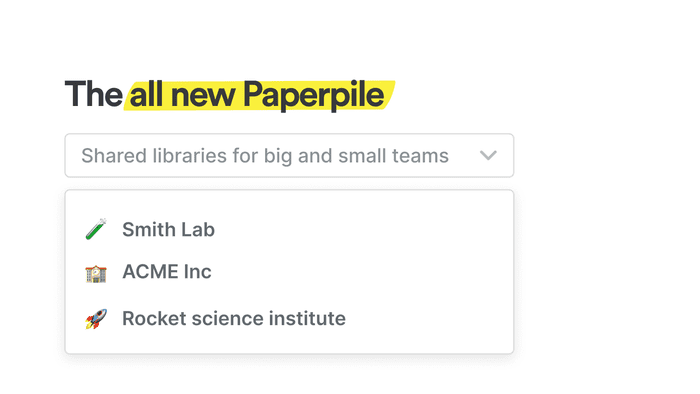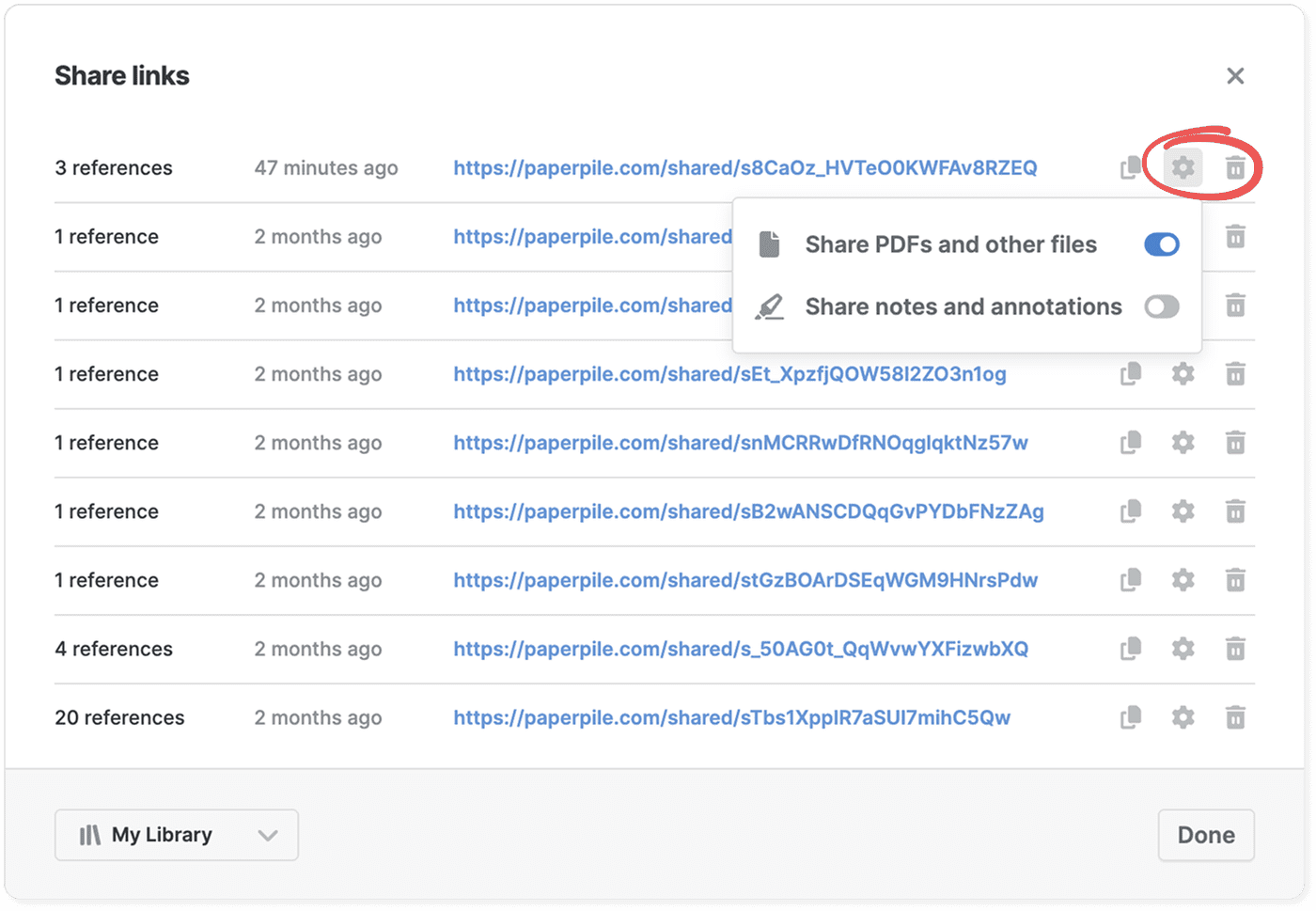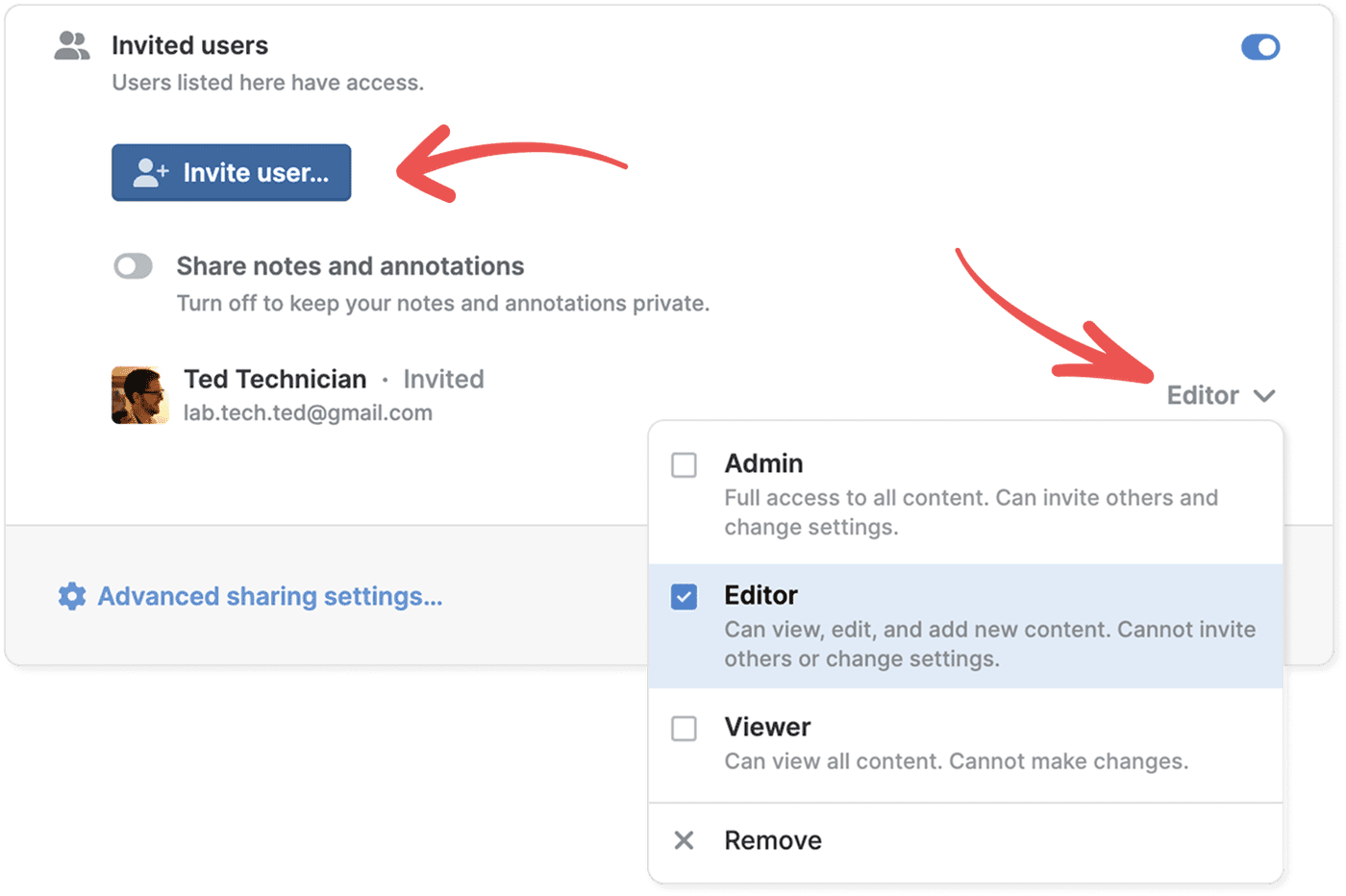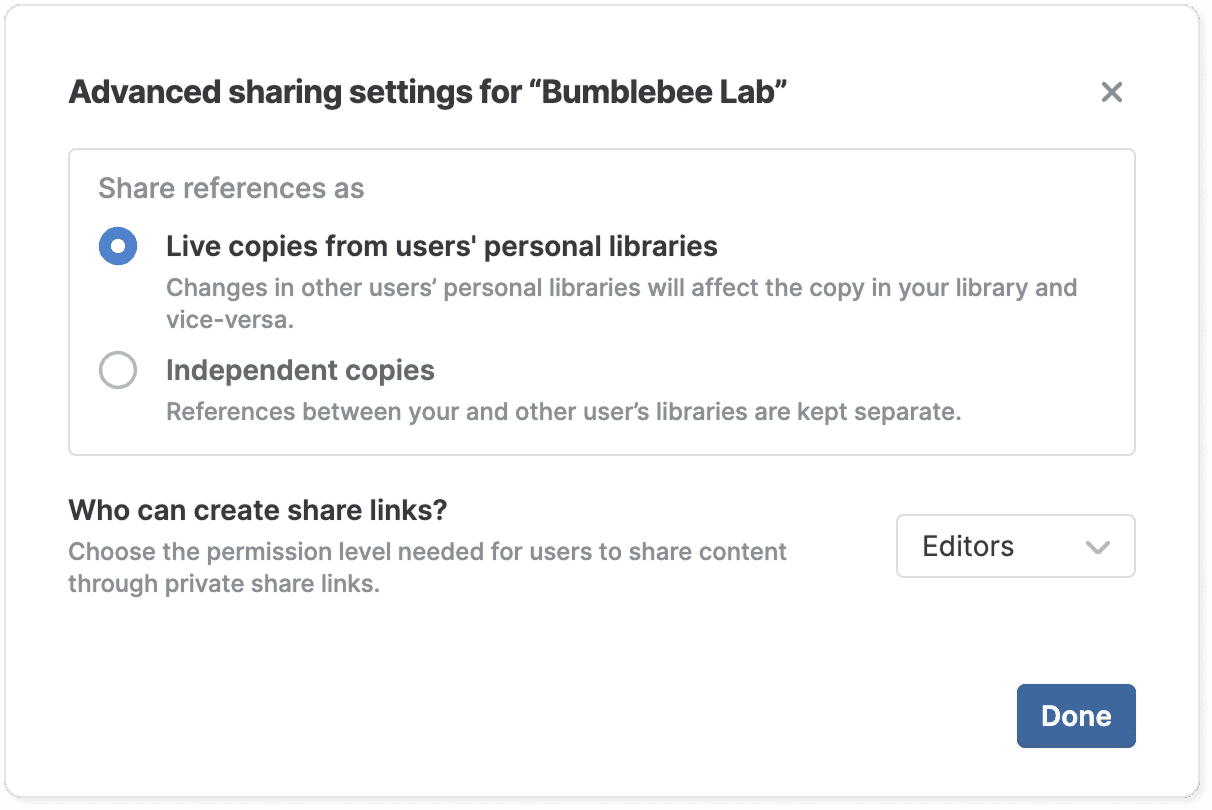
You rarely work alone as a researcher. Whether writing a paper with multiple authors, sharing a reading list with students, or maintaining a team-wide repository, collaboration is essential.
We completely revamped sharing in Paperpile to support all of these scenarios.
When you want to share something, just share it. Click a button, copy a link, or invite collaborators to a shared collection. Paperpile handles all the details and lets you focus on your work.
Which sharing option do you need?
Paperpile gives you three ways to share: quick links for sending papers to anyone, shared folders when you're working on a project together, and shared libraries when your whole team needs a central persistent collection.
| If you want to… | Use this | Why |
|---|---|---|
Send a few papers to someone fast | Share via link | One-click, no set-up |
Collaborate on a subset of your personal library (for example, a manuscript or team project) | Shared folder | Lives inside your library; easy to turn on/off |
Host a persistent group repository for a lab, organization, or company | Shared library (NEW) | Separate space with its own folders, labels, notes, and annotations |
Share reference lists with a link
Need to share a few papers quickly? Skip the email attachments.
Select papers from your library, click the share button in the toolbar, and copy the link. Share the link via Slack, email, or however you choose. Colleagues who open the link will see a list of references and links to their PDFs, if shared.
You control exactly what travels with the link — PDFs, supplementary files, notes, or annotations. Change sharing options or revoke links anytime under Settings > Data and files.

Share folders with collaborators
You can now share any folder in your library with other Paperpile users. From the folder's three-dot menu, select Share, check "Invited users”, and invite collaborators. Or, share with a link or with your team (if you have a team subscription).
Your notes and annotations on your PDFs stay private unless you turn on Share notes and annotations. This gives you control over what collaborators see beyond the basic reference details and PDFs.
Create shared libraries for group repositories
For lab-wide or company-wide repositories, you can now create a shared library separate from your personal library. Use the Add menu to create a shared library and share it with everyone on your team.
Shared libraries appear in the sidebar below your personal library. Each shared library has its own labels, folders, notes, and annotations.
Advanced sharing features
Permissions: You can set users as “Admin”, “Editor”, or “Viewer”. This controls who can add papers versus just read them. For example, a lab PI might be “Admin”, postdocs and graduate students “Editors”, and undergraduate students “Viewers”.

| Role | Can view papers | Can add/edit references | Can manage and remove members |
|---|---|---|---|
Viewer | ✔︎ | — | — |
Editor | ✔︎ | ✔︎ | — |
Admin | ✔︎ | ✔︎ | ✔︎ |
Live vs. independent copies: You can choose whether reference changes sync across all users (live copies) or if each person keeps their own version of each reference (independent copies).
Need a reference to stay identical across everyone’s library? Keep live copies (default). Running an archival, read-only company repository? Switch to independent copies so personal metadata tweaks don’t rewrite the master record.

Reference status at a glance: You can always see if a reference is shared, with whom, and where it came from.

And you can always see if a reference is from your library, if you have a copy of the reference in your library, or you can add a copy to your library via the plus button on the top right in the list.

What's next
We're revamping our Google Docs and Word plugins to integrate with the new sharing features. Google Drive sync will expand beyond personal libraries, and OneDrive sync is coming soon.
Got feedback for us on the new sharing features? Drop us a line via our in-app messenger or send an email to support@paperpile.com.